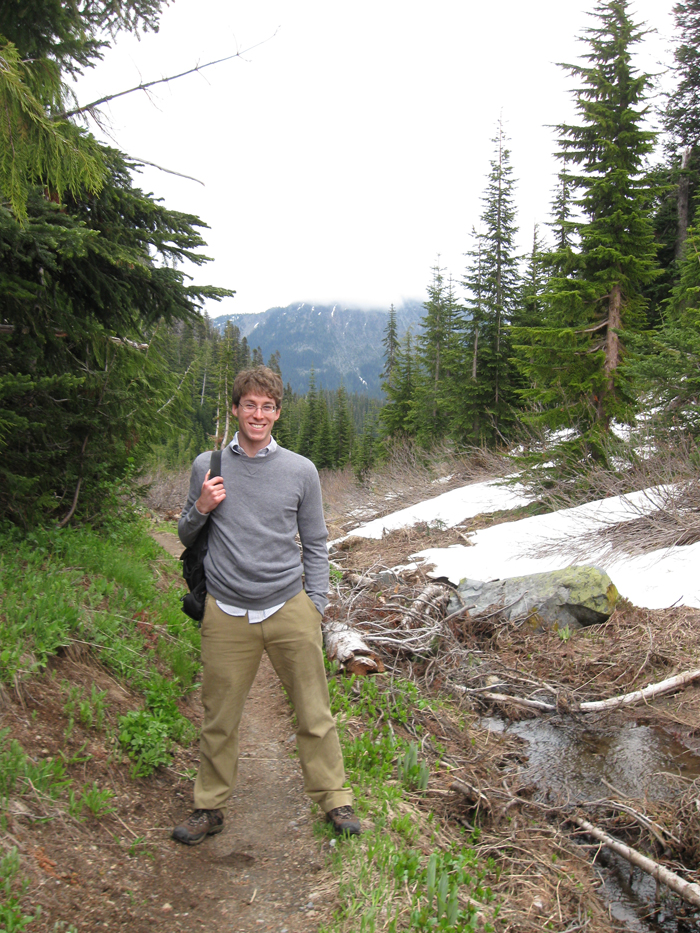Conservation Efforts Not Just for Tree Huggers

This ScienceLives article was provided to Live Science in partnership with the National Science Foundation.
As climate change stresses ecosystems, already rare plant species could, sadly, go extinct. One solution is to collect plant and seed samples and house them in seed banks or botanical gardens, preserving some genetic diversity. Biologist Sean Hoban uses mathematical and computational tools to develop guidelines for ecologists and others engaged in this work. A postdoctoral fellow at the National Institute for Mathematical and Biological Synthesis, Hoban helps determine how many seeds are needed and where they should be collected to best represent a species' diversity. With collaborators in Italy, France and elsewhere, he developed software to help people plan the best preservation strategies, especially when conservation funds are scarce. Well-planned seed collections, he says, are an important tool in preserving endangered species and promoting agricultural sustainability. He was first drawn to this work through his research on the endangered butternut tree. Below, Hoban answers our ten questions.
Name: Sean Hoban Institution: National Institute for Mathematical and Biological Synthesis Field of Study: Computational biology
What is your field and why does it inspire you?
As a computational biologist, I work in several fields of life science, primarily in ecology and genetics and particularly with plants. I use simulations and statistical tools to solve problems of "big data" or answer questions about complex systems, such as will species be able to move northward as the climate warms? I especially like working in ecology, as it involves studying the linkages between living things and their environment and because it requires big-picture thinking in order to address problems of sustainability, conservation and agriculture. What inspires me is knowing that the work I do has many real-world applications.
Please describe your current research.
My research helps to preserve endangered species and also contributes to agricultural sustainability. Specifically, some species can only be preserved outside of their natural environments, as their wild habitats are in great danger. For plants, this means collecting seeds and storing them in botanic gardens or seed banks. I use mathematical and genetic models to determine how many seeds are needed and where they should be collected from geographically, in order to best preserve a species' diversity, diversity that will be needed to adapt in the future. Well-planned seed collections can also capture valuable traits like adaptations to drought and disease, which can be helpful for crop breeding.
Get the world’s most fascinating discoveries delivered straight to your inbox.
What is the biggest obstacle to achieving your objective(s)?
There are two big challenges: the first is to make computational or simulation models realistic enough to provide useful conservation guidance, and the second is to take the research from the lab and put it into practice. For the first challenge, genetic scientists are only just beginning to understand how to construct detailed genetic models of important traits, such as the number of genes and the amount that each gene contributes to a complex trait like drought tolerance. For the second challenge, as a mentor of mine recently said, "It's one thing to do applied research and another thing to actually apply it." There are tough obstacles to ensuring the implementation of conservation recommendations , including contacting decision makers, convincing them that the statistics and simulations have value and are realistic, understanding on-the-ground needs and limitations, finding funding for collections, and long-term planning, such as how to keep and eventually propagate the "saved seeds" into a future environment.
What do you like best about your work?
I really enjoy the tools I use — computer simulations — and the topics I study — plant conservation. For the tools, I have the opportunity to be at the cutting-edge of technology and mathematical methods, such as improving the realism of population models and the efficiency of optimization techniques. Researchers from computer science, biology and economics are collaborating on these problems. As for the topic, I've been increasingly enamored with plants over the years. How fascinating it is to learn how these mostly stationary organisms obtain nutrients, grow toward light, find a mate, produce and distribute offspring. There are a few hundred thousand plant species and they all do it a little bit differently!
What has been your most discouraging professional moment and how did you recover? What did you learn?
I'll bet that for many young scientists, the most crushing moment is after we have written our first manuscript summarizing our exciting, new findings that we spent years working on, when we read the first critical reviews from other established scientists. Scientists are pretty unsympathetic when it comes to judging the science itself. We are especially good at finding flaws, suggesting better methods, desiring more details and more data. The anonymity and online nature of how science papers are reviewed can make the message even blunter. My first rejected grant and my first rejected paper were extremely discouraging. Later I learned to put away the comments for a while, come back, and tackle them one by one. One has to be systematic and dispassionate about taking critiques, and we learn that you just have to work harder!
What is the best professional advice you ever received?
One of my advisors laid out the following stark truth for me: "Eighty percent of success is knowing the right protocol." By this, she meant: read instructions thoroughly, remember to reciprocate favors, try to understand academic politics and hierarchies, learn the strengths and weaknesses of your collaborators. In short: success lies in the details, not all of which are in the science itself and not all of which you can take care of on your own.
What is the most surprising aspect of your work?
I think everyone would be surprised at the excitement of writing computer code! Coding involves great creativity because there are many different ways one can solve a computational, statistical or data management problem. There are also many small challenges throughout each day, and solving each one is a small but fulfilling accomplishment. You also have the challenge of planning into the future, for when your code gets more complex, though you also don't know exactly how the future code will look. You must have foresight but be adaptable. The small everyday challenges as well as big design challenges make writing code very satisfying.
What exciting developments lie in the future for your field?
A really exciting area of research is discovering the connections between the microscopic scale of genetic diversity and large-scale ecosystem processes, such as decomposition and nutrient cycling. We are beginning to learn that the genetic diversity of keystone species, such as common tree species, is very important for the resistance of an ecosystem to disturbance as well as its ability to "bounce back" after disturbance. There are still few examples of direct connections from genes to the ecosystem level, but this is a whole new realm for both ecologists and geneticists.
Who is your #1 hero and why?
Charles Darwin of course! He is a hero not only for his contributions to science but also for his fascinating life story, his diligence and tenacity, the challenges he faced in bringing radical ideas to the pretty conservative scientific audience of his time, and sailing around the world! But that one is too obvious, so I will add Michael Pollan. One reason that I admire Pollan is the excitement and clarity of his book, "Botany of Desire," which is a social and natural history of four plant species. Pollan doesn't just describe the utility of plants, he explores how humans and plants have changed each other, especially how plants changed society. His way of teaching botany, history, cuisine, and evolutionary relationships is exciting, and I hope that my own writing and teaching can someday be equally compelling.
What do you do when you're not in the lab or out in the field?
I cook! It is a great de-stress activity, a way to use my hands, be creative, stop looking at screens, and take a break from the very intellectually demanding and pretty competitive world of science. I learned a lot about a food-oriented life while living in France and Italy, and now I find great joy in cooking for others or teaching them the techniques I've learned. So I'm often trying new recipes, and I blog about my successful ones.
Editor's Note: The researchers depicted in ScienceLives articles have been supported by the National Science Foundation, the federal agency charged with funding basic research and education across all fields of science and engineering. Any opinions, findings, and conclusions or recommendations expressed in this material are those of the author and do not necessarily reflect the views of the National Science Foundation. See the ScienceLives archive.



